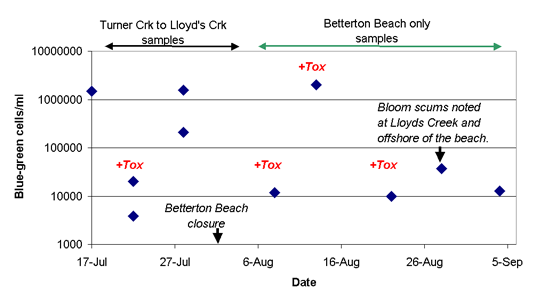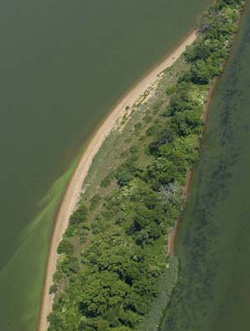Declining blue-green algae bloom and toxin levels at Betterton Beach, Sassafras River. |
||
| The blue-green algae bloom that has persisted on the Sassafras River since July 17th is showing signs of decline. The latest laboratory results received this week for samples collected on August 21st at Betterton Beach were positive for microcystin toxin but toxin levels were at their lowest level since July 22nd (Figure 1).
Blue-green algal concentrations were 12,700 cells/ml on September 4th for Betterton Beach. This was the third consecutive sampling that recorded less than 100,000 cells/ml (Figure 2). However, aerial investigations on August 28th still showed evidence of surface scum accumulations of blue-green algae with predictably high bloom concentrations in the water immediately north and east of Betterton Beach (Figure 3).
|



 The
Maryland Department of Natural Resources will continue to monitor all
The
Maryland Department of Natural Resources will continue to monitor all